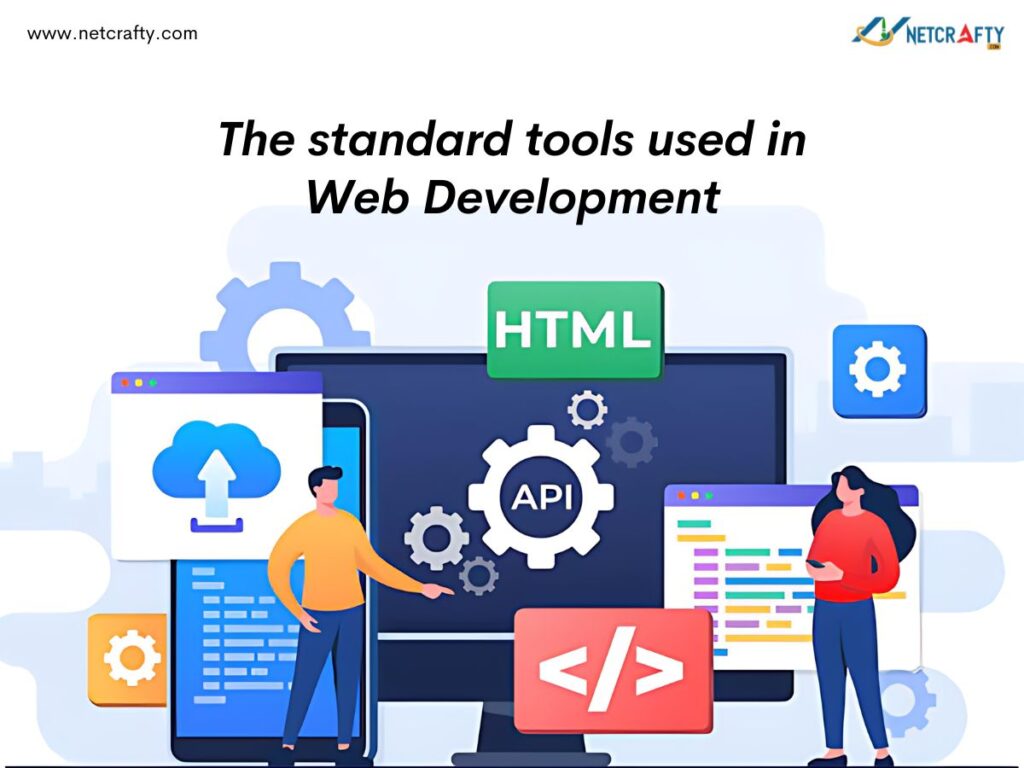Given the decentralized nature of the online and the range of ways to complete comparable jobs, web developers must create effective tool stacks. Understanding and using the appropriate combination of these technologies may speed up and improve any web development project. Here’s a basic overview of the standard tools used in web development:

Front-end Development
- HTML, CSS and JavaScript are the essential core programming languages.
- Use frameworks and library tools like React and Angular to create dynamic and responsive designs.
- To enhance CSS maintainability, use Sass and Less CSS processors.
- NPM, PIP, and Yarn help manage libraries and dependencies.
- Webpack or other build tools automate tasks and optimize code.
- For testing, Jest and Mocha are used for robust testing.
- Built-in browser tools are critical for debugging and tuning performance.
Back-end Development
- Standard programming languages are Java, Python and PHP.
- Django is a speed-up framework development.
- Options include SQL databases like MySQL and PostgreSQL and NoSQL choices like MongoDB.
- Web servers manage HTTP requests and static content.
- Authentication tools ensure security and user authentication.
- API tools are essential for creating and testing RESTful APIs.
Start with HTML
HTML is the essential building element for producing web pages. If you’re starting in web development, start with HTML to learn the fundamentals, then build exciting web pages to see how it all works.
It employs many tags, including table, form, and p. HTML is interesting and provides quick visual feedback in browsers such as Firefox, Edge, and Chrome, making it excellent for learning the fundamentals of grammar, code structure, and troubleshooting. While remembering all 145 HTML elements is optional, understanding how tags work and how attributes affect their behaviour is critical.
Style with CSS
HTML is used for structuring webpages, while CSS styles them, like adding colours, fonts, and layouts to enhance readability. CSS’s ability to create 2D artwork and animate text will appeal to creatives, making static pages more engaging.
Learn the code with JavaScript
JavaScript employs other coding languages to generate the structure and content of a webpage, which is then built upon to create dynamic page elements. JavaScript’s ability to develop complex and secure online features with the most basic types of code. JavaScript, HTML, and CSS work together smoothly to generate simple and complex web page features.
Domain registrars and site hosting
After mastering HTML, CSS, JavaScript, and responsive design, start your websites to learn about hosting, domain registration, SSL settings, content tools, and DNS management. Freelance developers frequently handle these duties for small to medium-sized company clients.
Integrate with RESTful API
To improve functionality, you will leverage RESTful API to process payments, link with social media, and manage user authentication. This will allow your web applications to connect to a global network of SaaS functions and online services, marking an essential step in web development.
Testing
Thorough testing ensures code quality and efficient operation. This covers unit testing with Jest and Mocha, integration testing, end-to-end testing with Selenium and Cypress, device responsiveness testing, accessibility testing for compatibility, and performance testing.
Deployment
Deployment in software and web development moves changes or updates from one deployment environment to another. When you set up a website, you will always have your live website, also known as the live environment or production environment.

Leave a Reply